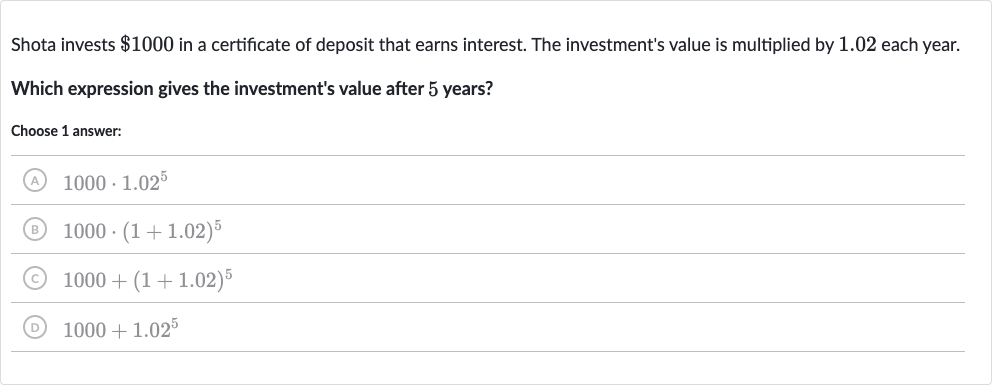Full solution
Q. Shota invests in a certificate of deposit that earns interest. The investment's value is multiplied by . each year.Which expression gives the investment's value after years?Choose answer:(A) (B) (C) (D)
- Understand the problem: Understand the problem.We need to find the value of an investment after years, where the investment increases by a factor of each year.
- Identify the correct expression: Identify the correct expression.The investment is multiplied by each year, so we need to use an expression that represents this annual multiplication over years.
- Evaluate the options: Evaluate the options.(A) suggests an addition, which is incorrect for yearly multiplication.(B) suggests adding to before raising to the power of , which is not the correct interpretation of the problem.(C) correctly represents the initial investment multiplied by raised to the power of , which is the number of years.(D) incorrectly suggests adding to before multiplying, which is not how the interest is applied.
- Choose the correct expression: Choose the correct expression.The correct expression is (C) because it accurately represents the initial investment being multiplied by each year for years.
More problems from Write exponential functions: word problems
QuestionGet tutor help
QuestionGet tutor help
QuestionGet tutor help
QuestionGet tutor help
QuestionGet tutor help
QuestionGet tutor help
QuestionGet tutor help
QuestionGet tutor help
QuestionGet tutor help

